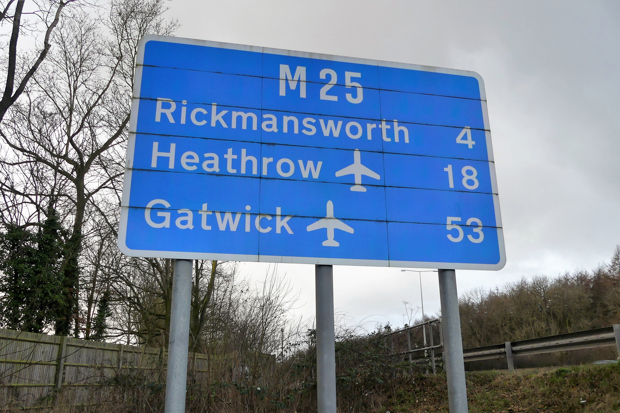What does the Heathrow third runway mean for the M25?

In January 2025, the government approved the long-debated third runway expansion of London’s Heathrow Airport. This will prompt the biggest changes to the M25 motorway since the 117-mile ring road was completed in 1986.
If you’ve ever looked at a map of the area, you’ll know there isn’t exactly a lot of room to slap down an extra two or so miles of asphalt for a new airstrip. And especially not space for all the associated infrastructure and taxiways. And so, the demolishing of hundreds of houses will be necessary, along with a rerouting of a significant chunk of the M25 between junctions 14 and 15.
Under the Heathrow Expansion Consultation published in June 2019, the proposed layout sees the new runway laid to the west of the M4 spur which takes traffic towards Terminals 2 and 3, crossing over the village of Harmondsworth - a great deal of which will need to be demolished - and over the current path of the M25.
Permanently severing the M25 at any point, let alone one of its busiest stretches, would, of course, be a terrible idea. And so, the plan is to tunnel under the new runway. Closing the road for the amount of time such a project takes to complete simply isn’t viable either.
The plan, then, is to build the tunnel 150 metres west of where that part of M25 lies currently. Once complete, the M25 will be rerouted into the tunnel, reducing disruption if not removing it entirely. There will need to be plenty of works carried out on the sections of the existing M25, and that will mean a temporary lower speed limit, likely 50mph.
As we’ve seen upon the opening of other new sections of roads, for instance, the A14 near Huntingdon, there may be a temporary limit of 50mph in place for a little while after the road’s opened.
It will be a massive project, featuring four underground ‘boxes’ - one for each direction of the main carriageway and one each for north and southbound ‘distributor roads’ and a road surface that sits up to 4.5 metres under the new runway. It’s worth noting it isn’t unprecedented. Heathrow cites Paris Charles de Gaulle and Hartsfield–Jackson Atlanta International as two airports with runways or taxiways that cross over motorways.
If there are any remaining sections of the old road that aren’t demolished to make way for the expanded airport, it’s unclear what will happen to them, but it’s likely Highways England will return them to nature, as it’s done for other closed bits of road like the former A3 near Hindhead. Sorry, urban explorers.
All of this sounds perfectly feasible in theory, but Highways England warned in 2016 of potential "significant risk of cost overruns".
It reckons the tunnel and related works would cost between £476 million and £1.1 billion and talk of "a substantial risk of excessive customer frustration about what might be a prolonged period of disruption."
At the time, then-transport secretary Chris Grayling suggested that building the runway on a ‘ramp’ over the existing M25 rather than creating a whole new section under a tunnel would be a cheaper option.
Even if everything goes according to plan, journeys through that part of the M25 could take longer on average than they do now. Traffic analytics firm INRIX has estimated a 10% increase in traffic with the additional car journeys necessary to get passengers to the hundreds of thousands of new flights taking off and landing from Heathrow post-expansion.
The M25 won’t be the only road reshaped by the growing airport, with re-routed sections planned for the A4 and A3044. Road widths may be "refined in due course to meet traffic capacity."
For now, though, nothing changes. There will be a formal planning process taking place for anything up to two years, during which time the proposal detailed in the 2019 consultation might change. There will then be a judicial review of that plan taking place, a process which BBC News reports will take about 18 months to complete.
Only then can work start, which will take many years. Chancellor Rachel Reeves confidently says the third runway could be up and running within 10 years, but given the UK’s recent track record with big infrastructure projects like the Crossrail and High Speed 2, it could be some time before you’re driving through that shiny new M25 tunnel.
What hatchback do you suggest for mainly motorway driving ?


